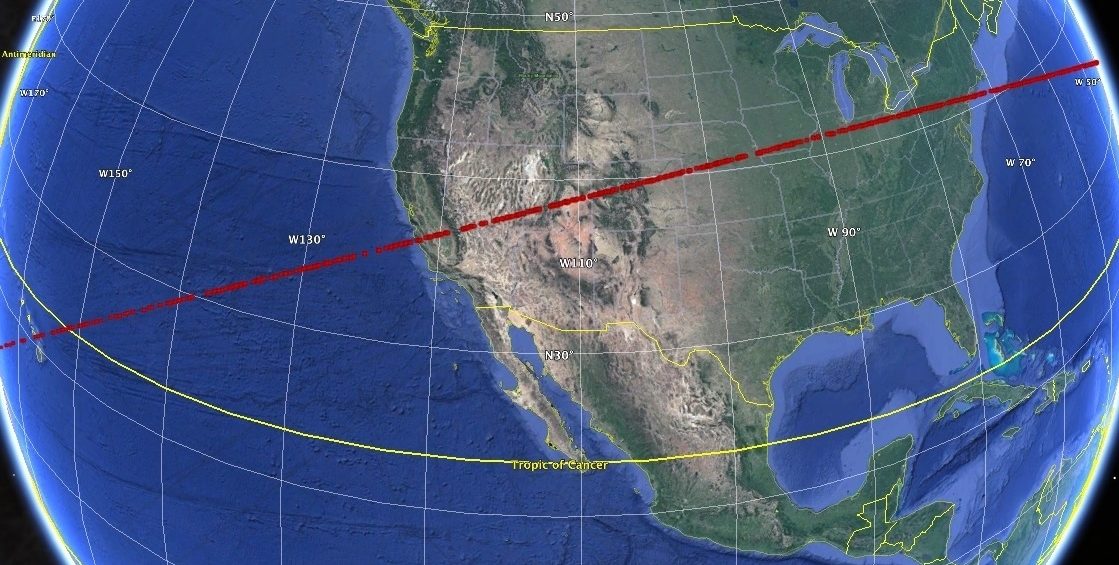News

This Week, NASA Is Pretending An Asteroid Is On Its Way To Smack The Earth
By: Nell Greenfieldboyce | NPR
Posted on:
The giant asteroid is in a horrible orbit and has a 1% chance of striking the Earth in just eight years. And — thank goodness — it doesn’t really exist.
It’s a fictitious asteroid that’s the focus of a realistic exercise devised for scientists and engineers from around the world who are attending the 2019 Planetary Defense Conference being held this week outside of Washington, D.C.
A real asteroid of this size, should it ever hit the planet, could wipe out an entire city.
“This is a threat that could happen, even though it’s extremely unlikely,” says Paul Chodas, director of the Center for Near Earth Object Studies at NASA’s Jet Propulsion Laboratory, who created this realistic simulation. “Our goal here is to go through all of the steps that we would have to go through.”
He says a lot has been learned from three previous drills held at past international conferences, and other asteroid exercises that have been separately conducted by officials at NASA and the Federal Emergency Management Agency.
This time around, the pretend asteroid is around 300 to 1,000 feet across, and was spotted around 35 million miles away. What’s known about its fake trajectory indicates that it has a 1 percent chance of hitting our planet in 2027.
On the web page for the imaginary “Asteroid 2019 PDC,” NASA warns that it ” does not describe a real potential asteroid impact.”
Chodas deliberately designed this pretend threat to stress the international system for decision-making. Every day at this conference in College Park, Md., experts will gather to discuss new information that Chodas gives them from his prepared script.
“The asteroid is not in a convenient orbit at all,” he says. “It’s not like one of these asteroids that we go to with our science missions, where you get to pick a nice asteroid that’s easy to get to. In planetary defense, the asteroid picks you.”
And while eight years might seem like plenty of time to get ready, Chodas says that’s actually a challenging schedule because experts would like to conduct multiple missions to the pretend asteroid, to gather information.
“You don’t even know really if it’s going to hit the Earth, and yet because the schedule is tight, you have to begin preparations to study the asteroid,” he explains. “You don’t know the size, really, and the size is a key parameter. So you need reconnaissance missions first.”
Asteroid experts will have to make decisions about how to try to deflect the asteroid, by pushing it with spacecraft or maybe even by detonating a nuclear weapon. If those efforts fail, and it’s still headed toward Earth, emergency managers would have to contemplate a mass evacuation of the strike zone.
In real life, asteroid hunters have discovered almost all of the really large space rocks that could possibly create a devastating global catastrophe, Chodas says.
“That part of the hazard has been addressed,” he says. “We have in fact discovered almost all of the really large asteroids.”
But asteroids that are the size of the fake one in this exercise, he says, are more numerous. They also hit the Earth more frequently (although it’s still tens of thousands of years between impacts).
“The majority of that population” of smaller asteroids, Chodas says, “has yet to be found.”
Last year, the federal government released an action plan laying out steps to take over the next decade to better prepare for this kind of low-probability, high-consequence threat.
9(MDI4ODU1ODA1MDE0ODA3MTMyMDY2MTJiNQ000))

